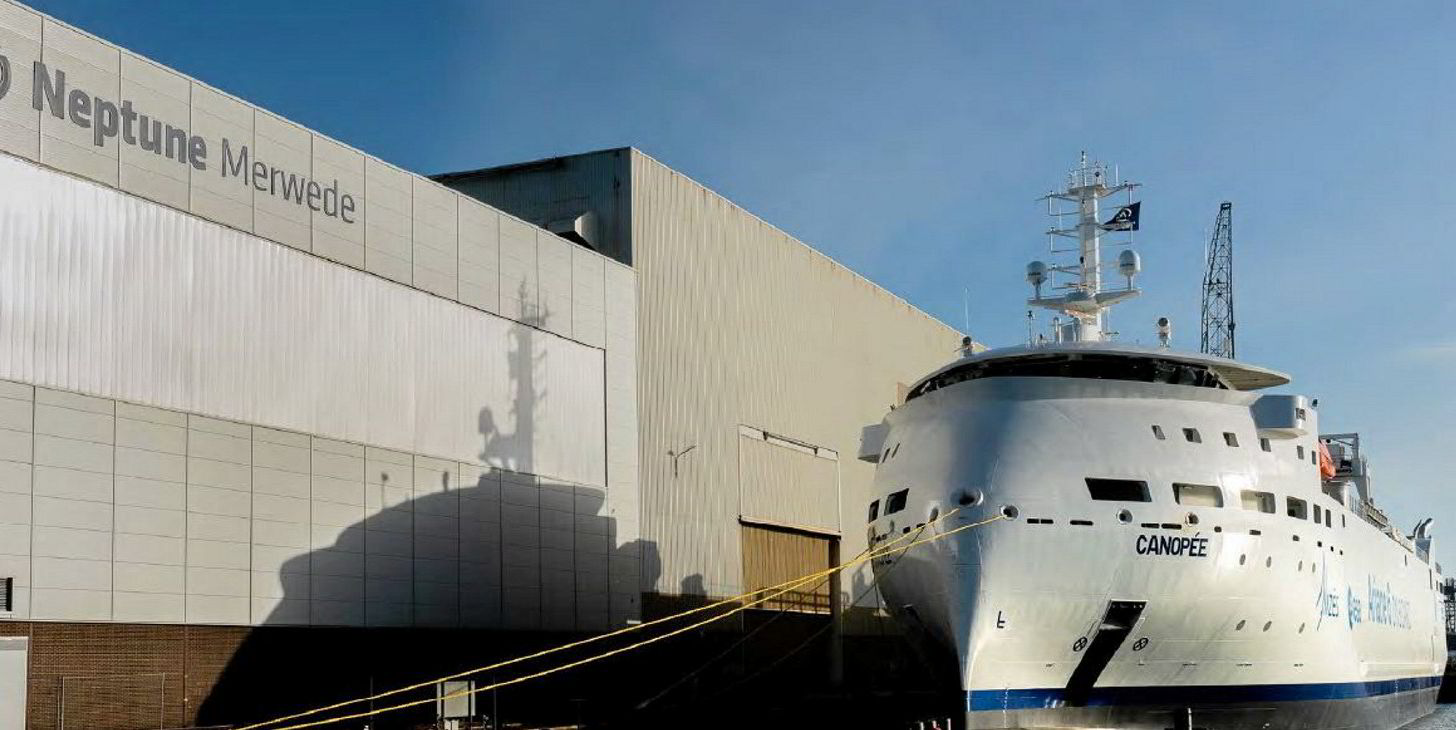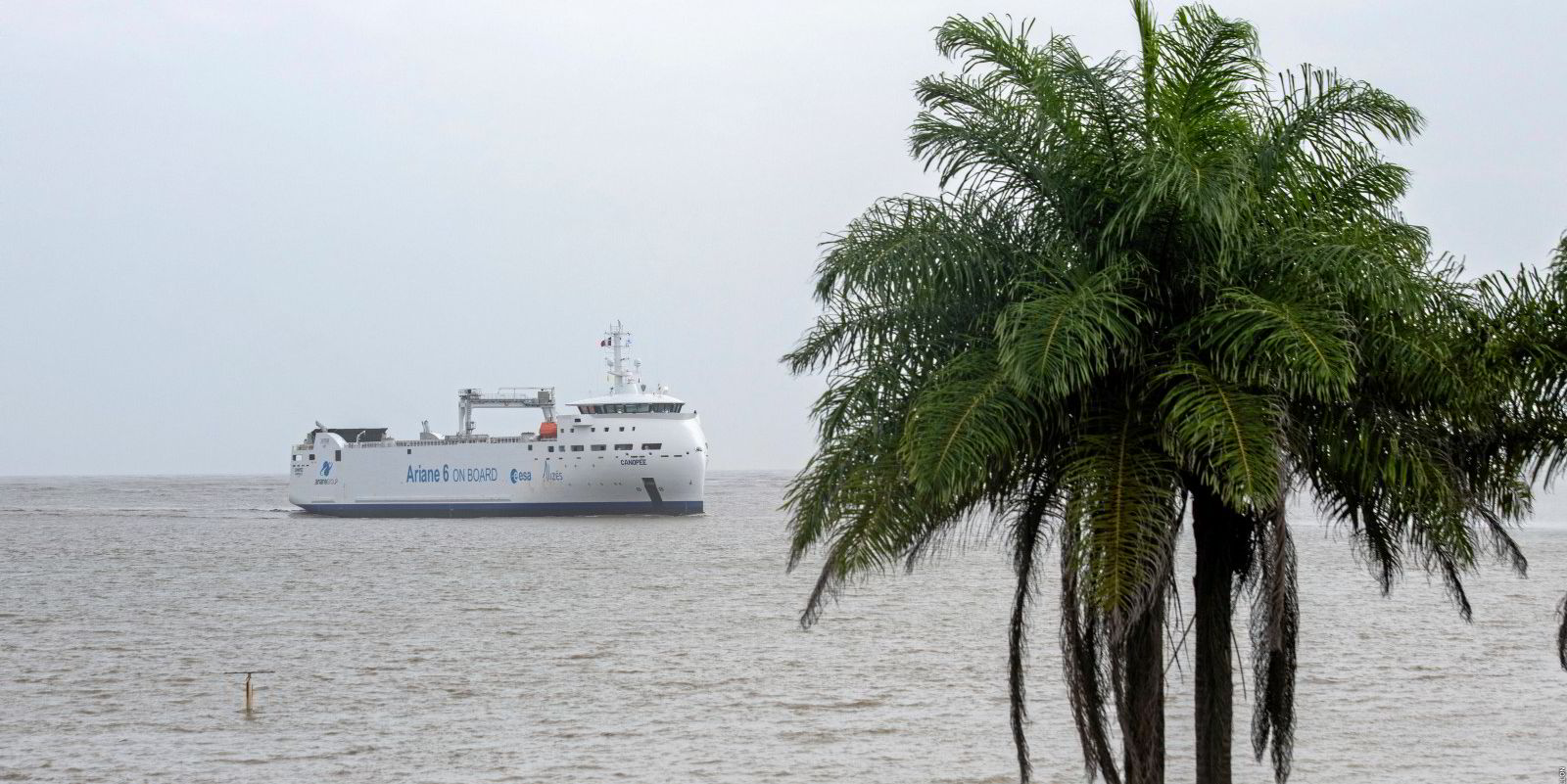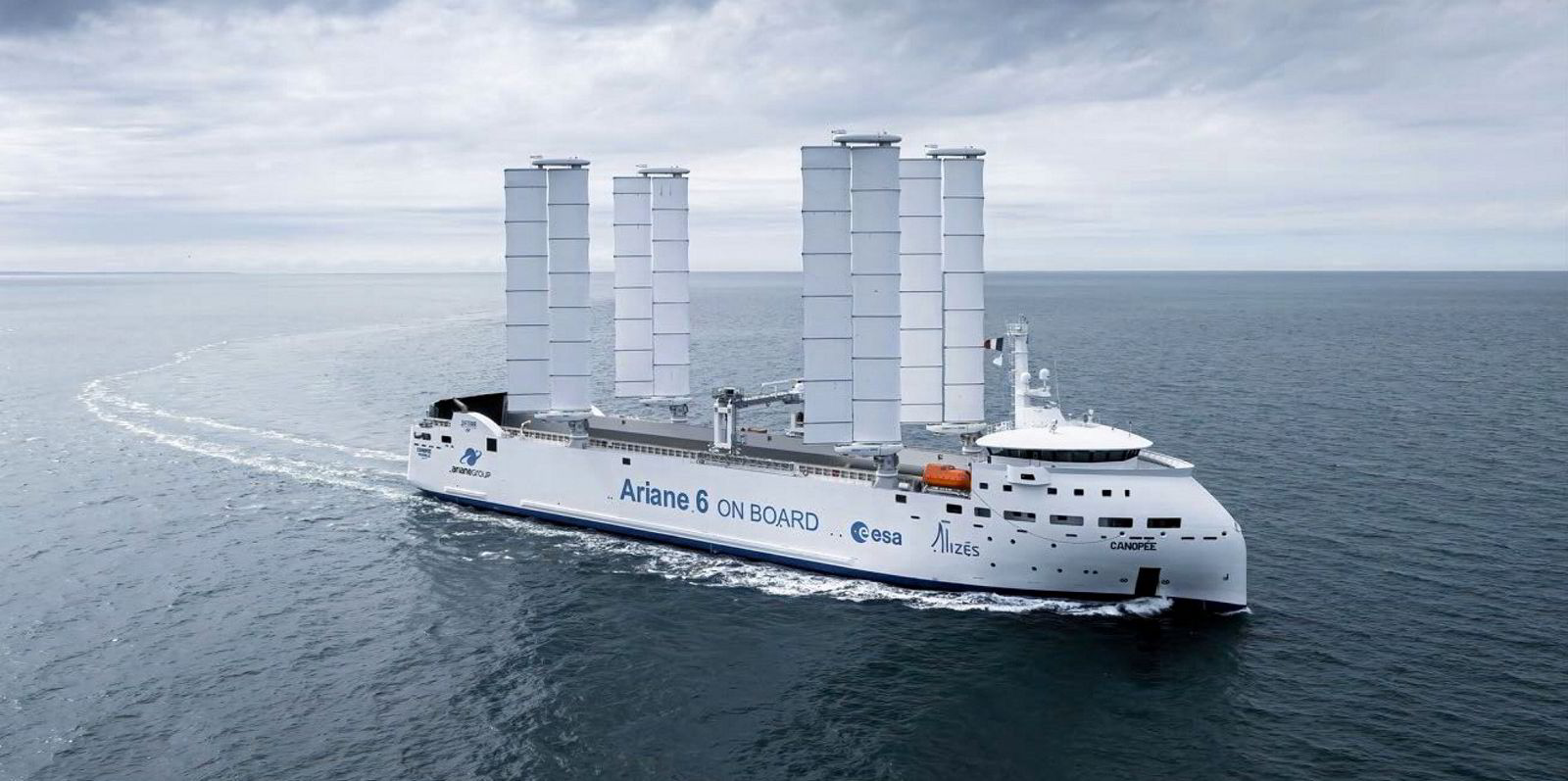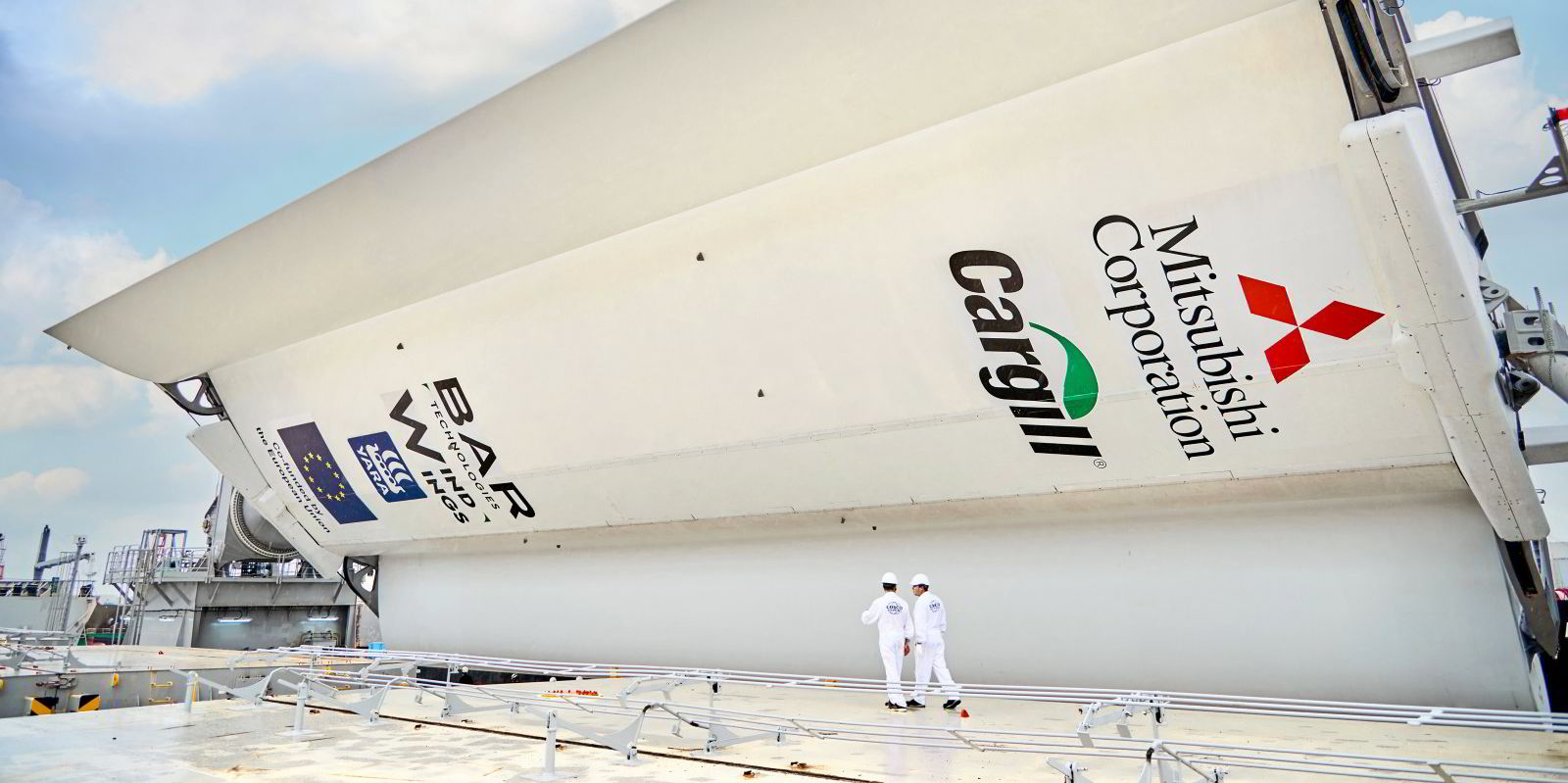Wind propulsion is not rocket science, but it is about to help reduce the carbon emissions of the supply chain required to put rockets into space.
A hybrid vessel propelled by four wingsails and two diesel engines is about to begin its first wind-propelled voyages under a 15-year contract carrying space launcher parts from Europe to French Guiana.
After construction of the 1,000-lane-metre Canopee was completed in December, the ro-ro vessel has now been outfitted with four Oceanwings sails built by AYRO.

The ship is owned by Jifmar Guyane and chartered to shipping company Alizes, which will operate the vessel for French-German space launcher ArianeGroup.
ArianeGroup will use the vessel to carry components for its Ariane 6 rocket launcher for the European Space Agency.
The ship is the latest addition to a small but fast-growing fleet of vessels that are harnessing the power of wind to reduce greenhouse gas emissions. The Green Seas podcast reported recently that there are 30 ships on the water using wind-assisted propulsion.
The partners believe the Canopee’s four wingsails could bring 30% average reductions in fuel consumption, slashing CO2 emissions. They position it as an opportunistic rather than restrictive approach to tackling climate pollution, because the wings do not impact the ship’s performance and therefore do not conflict with its commercial goals.
The companies describe the vessel as the first hybrid industrial ship that has collapsible wings.

The Canopee project began in 2018, when ArianeGroup issued a tender for the vessel. The 15-year term of its contract for the ship was key to securing financing for such a project.
Alizes, a joint venture of Jifmar and low-carbon shipping specialist Zephyr & Boree, was created in 2019 as it won the tender.
Nils Joyeux, who is chief executive of Alizes and general director at Zephyr & Boree, said there are just three key ways to reduce greenhouse gas emissions in shipping: reducing speeds, synthetic fuels and wind propulsion.
“We are convinced that this last solution can play a major role in decarbonising maritime transport,” said the executive, whose company is also building container ships powered by wind and methanol.
The companies signed an order with Dutch shipbuilder Neptune Marine the following year to construct the vessel, as well as an order with AYRO for the four wingsails.
Jifmar general director Jean Michel Berud said in a statement that the project is emblematic of his company’s innovative DNA.

“It allows us to challenge ourselves and reaffirm our position as a pioneer, while at the same time working to promote one of our group’s core values: decarbonisation and, more generally, respect for our environment,” said the executive, who is also chairman of Alizes.
The ship, which was classed by Bureau Veritas, made its first Atlantic crossing to the French Guiana port of Pariacabo in December before the sails were installed.
Like Cargill’s partnership with BAR Technologies, the project is another example of wind propulsion solutions emerging out of the sporting world. Naval architecture firm VPLP, best known for its role in yacht and ocean racing, designed the ro-ro.
Paris-based AYRO, which like VPLP was co-founded by Marc Van Peteghem, spent five years developing its Oceanwings 363 sails, which have a surface area of 363 cubic metres and stand 37 metres tall.
The company believes the fuel savings could reach as high as 50%.
“If every ship at sea were retrofitted to carry Oceanwings, CO2 level drops would be gigatonnes,” board member Stephen Petranek said in a LinkedIn post.
___________
Podcast: The race to bring wind propulsion back to shipping
In recent weeks, at least three shipowners and operators have announced steps to use wind technologies on their fleets. UK shipping group Tufton said it is seeing 10% fuel reductions in a trial of Anemoi Marine Technologies’ rotor sails. Tanker owner Odfjell said it plans to add suction sails to its ships.
And Cargill has completed the installation of BAR Technologies-designed WindWings sails on a Mitsubishi Corp-owned bulker.
The fleet of wind-propelled vessels is growing rapidly, but it is still a tiny percentage of global shipping.
The Green Seas podcast spoke to Cargill Ocean Transportation president Jan Dieleman, BAR Technologies chief executive John Cooper and International Windship Association secretary general Gavin Allwright about what has been achieved so far and how to push it forward to reduce shipping’s carbon footprint.
___________
Air lubrication pioneer Silverstream builds out leadership team
Silverstream Technologies, the London-based company that is installing air lubrication technology on the ships of some of the world’s biggest vessel operators, has mounted a major expansion of its leadership team.
The latest to join the company is Catriona Savage, the new chief technology officer.
Her addition to the team follows the hiring of chief commercial officer Alistair Mackenzie earlier this month. And that came after the technology firm hired three more “C-suite” executives — those with chief at the beginning of their titles — in 2022.
___________
Were electric Porsche dream cars the cause of the Fremantle Highway fire?
Photos of the damage caused by a catastrophic fire on the 6,210-ceu car carrier Fremantle Highway (built 2013) have reignited a debate over the possible cause of the blaze, as Adam Corbett reported.
A grainy photo has emerged of the charred remains of the $100m cargo of what appears to be melted high-value German cars.
It is being suggested by some experts that the blackened remains include a row of Porsche Taycan electric sports cars.
The dream car for environmentally conscious speed enthusiasts is the same vehicle linked to a fire that destroyed the 6,400-ceu car carrier Felicity Ace (built 2005).





